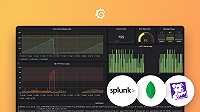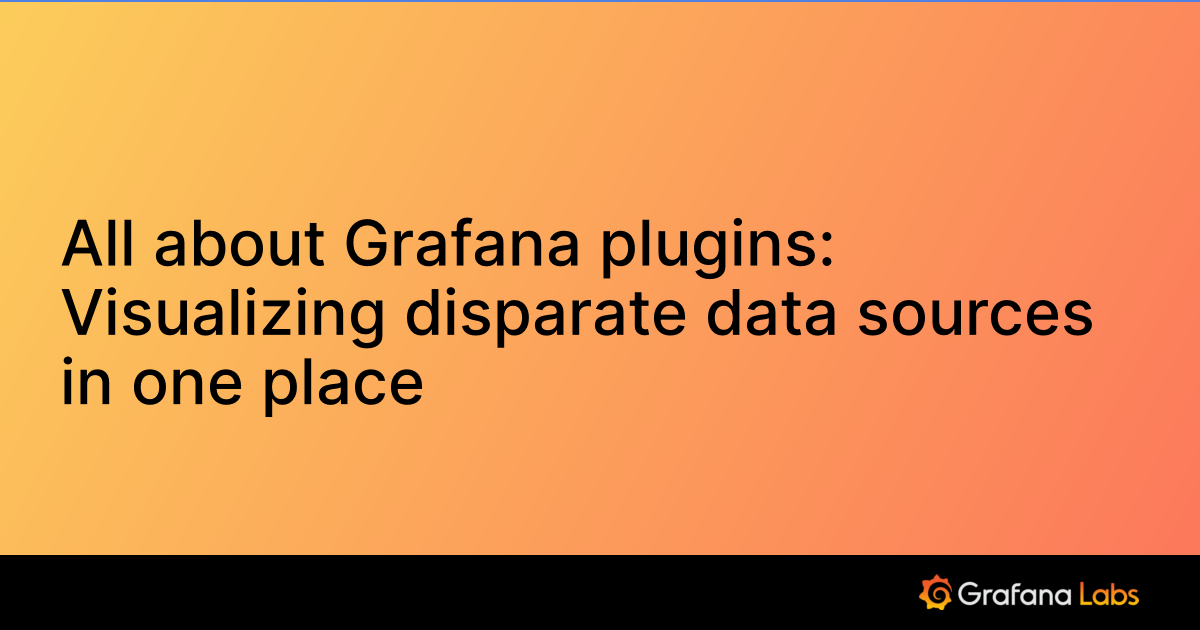Important: This documentation is about an older version. It's relevant only to the release noted, many of the features and functions have been updated or replaced. Please view the current version.
Since version 4.3 Grafana can use MySQL as a native data source. The idea of Direct DB Connection is that Grafana-Zabbix plugin can use this data source for querying data directly from a Zabbix database.
One of the most resource intensive queries for Zabbix API is the history query. For long time intervals history.get
returns a huge amount of data. In order to display it, the plugin should adjust time series resolution
by using consolidateBy. Ultimately, Grafana displays this reduced
time series, but that data should be loaded and processed on the client side first. Direct DB Connection solves these two problems by moving consolidation to the server side. Thus, the client gets a ‘ready-to-use’ dataset which is much smaller. This allows the data to load faster and the client doesn’t spend time processing the data.
Also, many users see better performance from direct database queries versus API calls. This could be the result of several reasons, such as the additional PHP layer and additional SQL queries (user permissions checks).
Direct DB Connection feature allows using database transparently for querying historical data. Now Grafana-Zabbix plugin supports few databases for history queries: MySQL, PostgreSQL and InfluxDB. Regardless of the database type, idea and data flow remain the same.
Data Flow
This chart illustrates how the plugin uses both Zabbix API and the MySQL data source for querying different types
of data from Zabbix. MySQL data source is used only for pulling history and trend data instead of history.get
and trend.get API calls.
Query structure
Below is an example query for getting history in the Grafana-Zabbix Plugin:
MySQL:
SELECT itemid AS metric, clock AS time_sec, {aggFunc}(value) as value
FROM {historyTable}
WHERE itemid IN ({itemids})
AND clock > {timeFrom} AND clock < {timeTill}
GROUP BY time_sec DIV {intervalSec}, metric
ORDER BY time_sec ASCPostgreSQL:
SELECT to_char(itemid, 'FM99999999999999999999') AS metric,
clock / {intervalSec} * {intervalSec} AS time,
{aggFunc}(value) AS value
FROM {historyTable}
WHERE itemid IN ({itemids})
AND clock > {timeFrom} AND clock < {timeTill}
GROUP BY 1, 2
ORDER BY time ASCwhere {aggFunc} is one of [AVG, MIN, MAX, SUM, COUNT] aggregation functions, {historyTable} is a history table,
{intervalSec} - consolidation interval in seconds.
When getting trends, the plugin additionally queries a particular value column (value_avg, value_min or value_max) which
depends on consolidateBy function value:
MySQL:
SELECT itemid AS metric, clock AS time_sec, {aggFunc}({valueColumn}) as value
FROM {trendsTable}
WHERE itemid IN ({itemids})
AND clock > {timeFrom} AND clock < {timeTill}
GROUP BY time_sec DIV {intervalSec}, metric
ORDER BY time_sec ASCPostgreSQL:
SELECT to_char(itemid, 'FM99999999999999999999') AS metric,
clock / {intervalSec} * {intervalSec} AS time,
{aggFunc}({valueColumn}) AS value
FROM {trendsTable}
WHERE itemid IN ({itemids})
AND clock > {timeFrom} AND clock < {timeTill}
GROUP BY 1, 2
ORDER BY time ASCNote: these queries may be changed in future, so look into sources for actual query structure.
As you can see, the Grafana-Zabbix plugin uses aggregation by a given time interval. This interval is provided by Grafana and depends on the panel width in pixels. Thus, Grafana displays the data in the proper resolution.
InfluxDB
Zabbix supports loadable modules which makes possible to write history data into an external database. There’s a module for InfluxDB written by Gleb Ivanovsky which can export history into InfluxDB in real-time.
InfluxDB retention policy
In order to keep database size under control, you should use InfluxDB retention policy mechanism. It’s possible to create retention policy for long-term data and write aggregated data in the same manner as Zabbix does (trends). Then this retention policy can be used in plugin for getting data after a certain period (Retention Policy option in data source config). Read more about how to configure retention policy for using with plugin in effluence module docs.
InfluxDB Query
Eventually, plugin generates InfluxDB query similar to this:
SELECT MEAN("value")
FROM "history"
WHERE ("itemid" = '10073' OR "itemid" = '10074')
AND "time" >= 1540000000000s AND "time" <= 1540000000060s
GROUP BY time(10s), "itemid" fill(none)Functions usage with Direct DB Connection
There’s only one function that directly affects the backend data. This function is consolidateBy. Other functions work on the client side and transform data that comes from the backend. So you should clearly understand that this is pre-aggregated data (by AVG, MAX, MIN, etc).
For example, say you want to group values by 1 hour interval and max function. If you just apply groupBy(10m, max) function, your result will be wrong, because you would transform data aggregated by default AVG function. You should use consolidateBy(max) coupled with groupBy(10m, max) in order to get a precise result.
Was this page helpful?
Related resources from Grafana Labs




